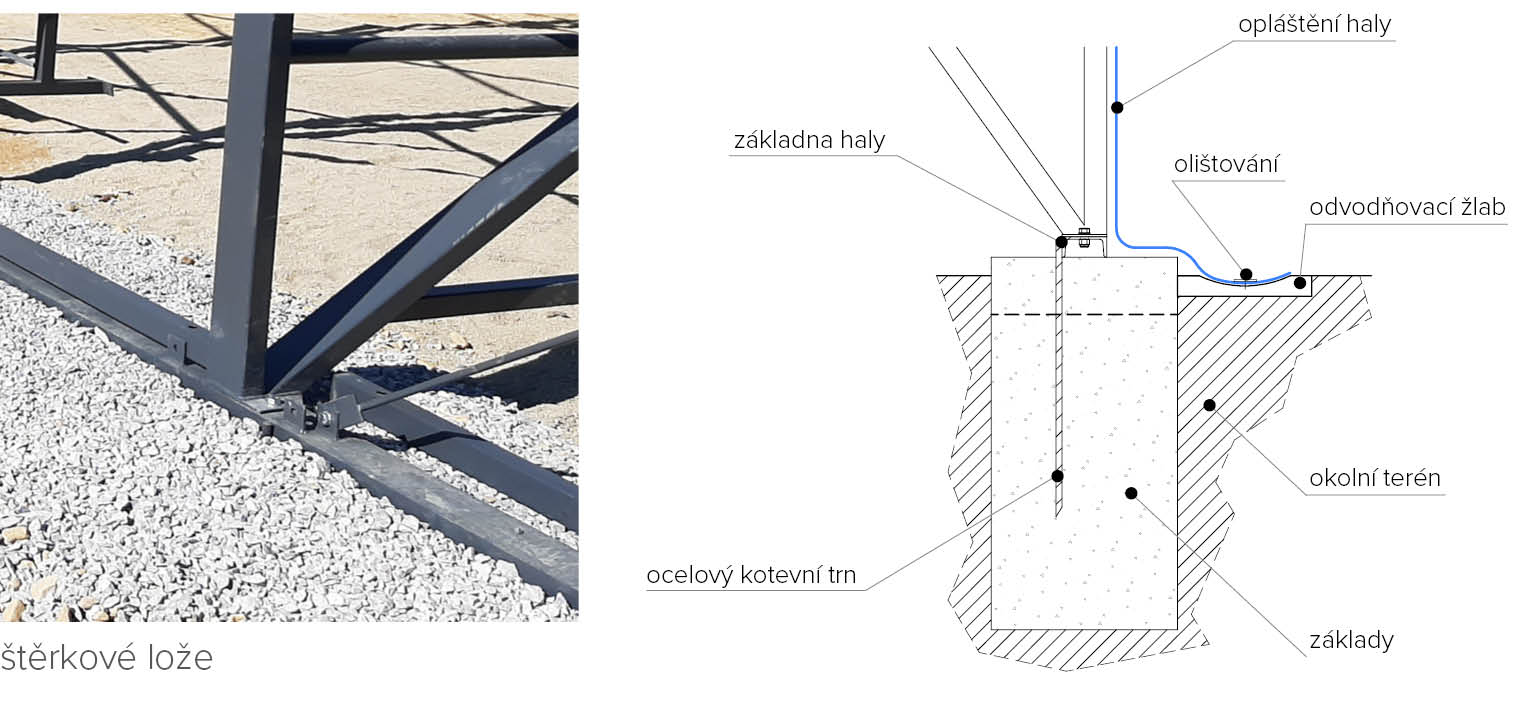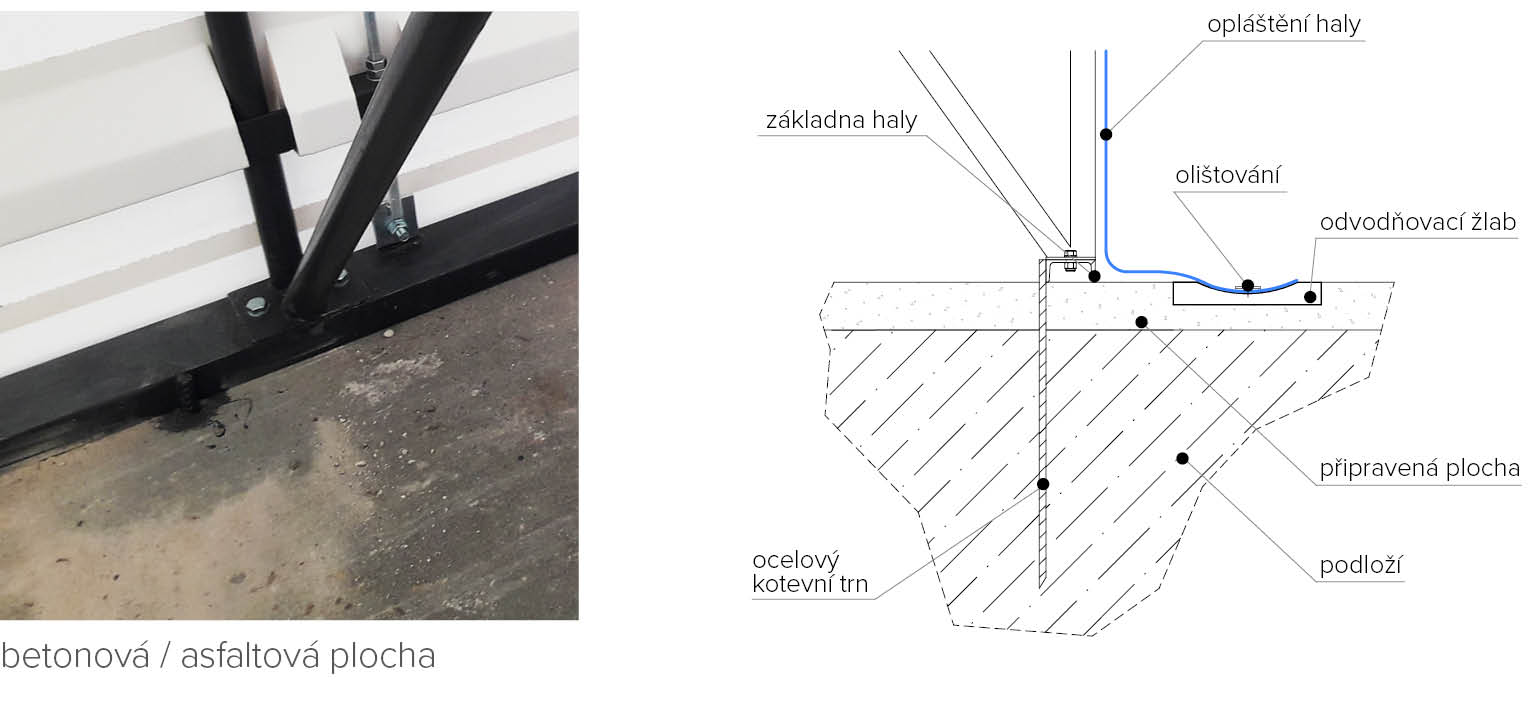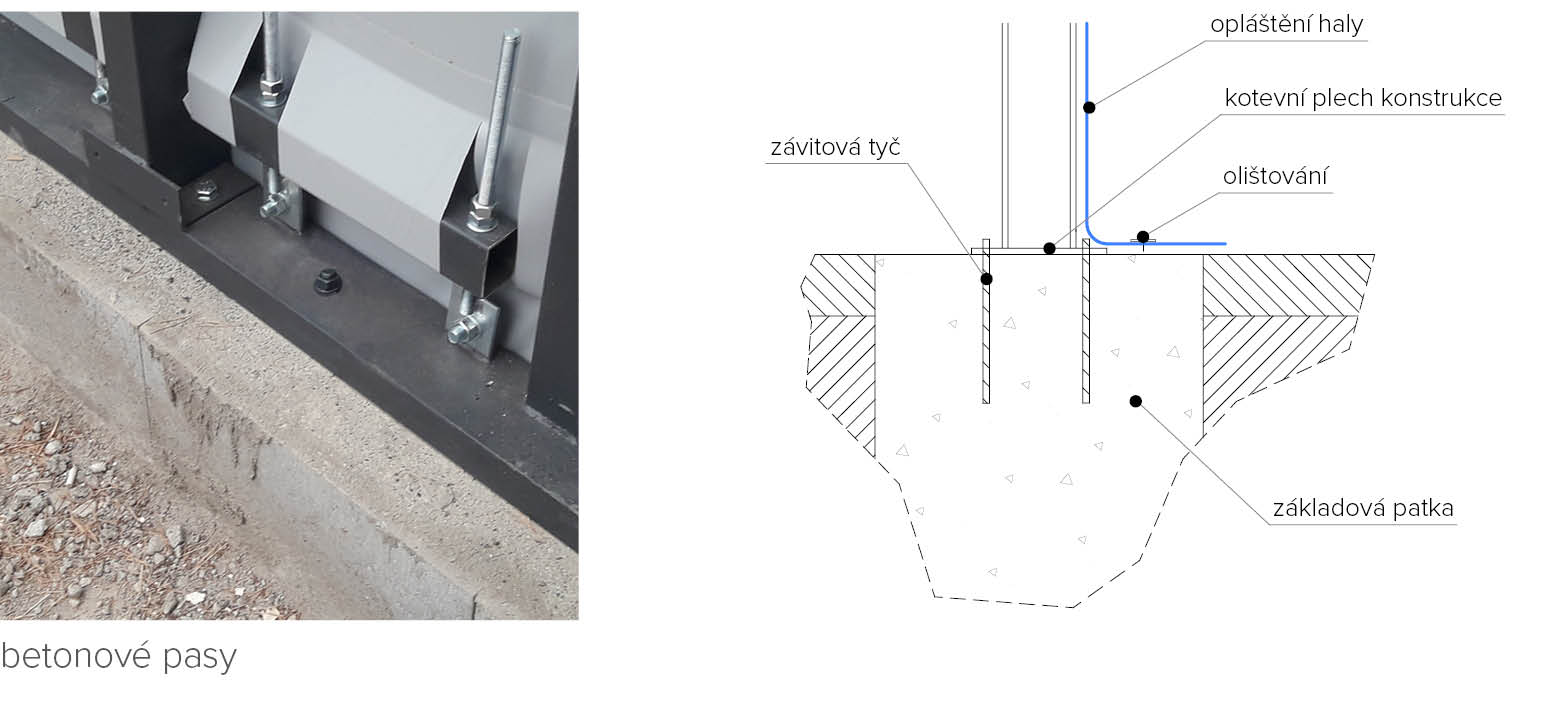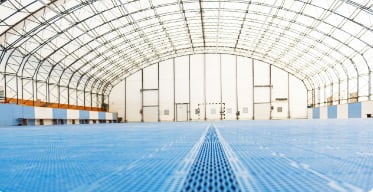Ballast bed
The simplest and most economical method of erecting a hall is to create foundations. This method is suitable for light prefabricated structures of the UT type, which do not impose significant requirements on the substructure thanks to their design and shape. In practice, this involves excavation along the hall perimeter, which is filled with ballast of various fractions, compacted in layers, into which lime milk can eventually be poured.

Asphalt and concrete area, road panels, interlocking pavement
Depending on the concept and total dimensions of the hall, the area already existing at the construction site can also be suitable for the hall construction.
Whether it is the existing asphalt or concrete area or an area composed of road panels or interlocking pavement,
the hall can obviously be anchored to it directly (depending on the bearing capacity and flatness assessment) without the need to create a new area.

Concrete strips / footing
Concrete strips / footing are the most voluminous form of substructure; in most cases, they are necessary for more extensive building designs – large and heavy halls. The concrete strip / footing is determined on the basis of static calculation of the given steel structure, or on the basis of reactions induced by this structure.

Safety and health at work
Safety and health at work is the priority in each of our activities, particularly hall construction, where the work risks are the highest. During hall construction, therefore, all precautions of safety and health at work are observed in conformity with both our internal regulations and the investor’s internal regulations. Similarly, internal regulations regarding the environmental policy are important to us.

